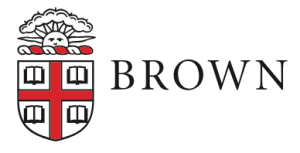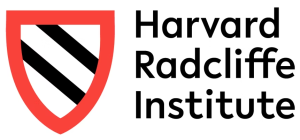5 Historic Mergers and Acquisitions in Higher Education
Find your perfect college degree
Colleges and universities are akin to for-profit corporations and non-profit organizations in that these institutions of higher education can engage in mergers and acquisitions (M&A), too. While there are similarities between mergers and acquisitions, these are different transactions with distinct effects on the organizations involved.

Where a merger results in the consolidation of formerly independent colleges into a single university, an acquisition means the buyer-university acquires the name and assets of the college being bought.
Unlike corporate M&As, however, higher education M&As are usually friendly and mutually beneficial transactions instead of hostile takeovers.
Here, we take a brief look at the mergers and acquisitions in higher education, which are considered landmark events that shaped the industry’s continuing evolution.
At their core, these transactions represent strategic decisions that pool the talents and resources of the entities involved toward a shared mission, usually of excellence in academics, research, and service.
Reasons For M&As Among Colleges and Universities
As with corporate M&As, colleges and universities engage in these transactions for many reasons. Their motivations include cost efficiency, enhancement of academic quality, and research productivity.
Financial Stability
Colleges and universities face financial difficulties that can result in mergers and acquisitions or, in severe cases, closures, particularly in the aftermath of the COVID-19 pandemic.
In 2023 alone, several non-profit colleges announced their closures while many opted for mergers or acquisitions, which dwindling fortunes have caused. These were attributed to decreasing enrollment, which resulted in the institutions’ inability to sustain operations.
For institutions that chose the M&A move, their continued operations were a reward in itself. The promise of financial stability is a primary motivating factor for these decisions.
Examples include the Thunderbird School of Global Management being acquired by the Arizona State University and the Saint Leo University-Marymount California University merger.
Research Collaborations
Not every M&A in higher education is about the money! There are a few exceptions where the strategic decision was motivated by the desire for increased collaboration and convergence in research programs.
Here, the concerned institutions combined their talents, resources, and facilities toward the enhancement of their research capabilities, from securing more funding opportunities to nurturing the creation, discovery, and innovation of knowledge and technology.
The foremost example is the affiliation between the Enrico Fermi Institute and the University of Chicago in 1940.
Enhanced Academic Programs and Infrastructure
When colleges or universities merge, their academic offerings can increase in terms of quality and quantity, too. By combining their academic departments, the involved colleges can offer prospective and current students more academic programs, a more comprehensive curriculum, and more specializations.
With said enhancements, it’s possible to attract a wider range of students that, in turn, will mean more revenue.
M&As can also result in improved physical infrastructure for the colleges involved and greater access to each other’s facilities. The JHU and Peabody Institute affiliation is an excellent example.
Geographic Expansion
In the age of online learning, the ability to offer online academic programs contributes to the financial viability, geographical reach, and overall reputation of the involved institutions. By attracting students from a wider geographical area, even from foreign nations, these goals can be achieved. This was the case for Purdue University when it acquired Kaplan University.
Meeting Regulatory Requirements
M&As can also be done in compliance with regulatory requirements set by the state or federal government. These regulations can be related to new academic standards, accreditation requirements, and education policies. For example, the Pennsylvania State System of Higher Education (PASSHE) merged its six universities into two universities.
Indeed, these strategic partnerships are intended to be mutually beneficial for the involved institutions. However, whether actual results back the theory is another matter.
One thing is clear in these M&As – the teachers and learners, the management and non-teaching staff, and the local communities where these institutions operate will experience the changes – good or bad – brought by these partnerships.
Historic Mergers and Acquisitions in the U.S. Higher Education Landscape
The Merger of Brown University and Pembroke College (1971)

The July 1, 1971, formal merger between Brown University and Pembroke College in Boston University was 80 years in the making! The merger was a turning point in the modern progress of gender inclusivity and equality in the United States higher education landscape.
Founded on October 1, 1891, the Women’s College Adjunct to Brown University allowed women to complete courses, take examinations, and earn college degrees from Brown University. Pembroke was established as an answer to the challenge of Brown’s men-only enrollment.
The women-only college was later renamed the Women’s College in Connection with Brown University and, up until the merger, Pembroke College in Brown University.
Note that while Pembroke’s female students received Brown degrees upon completion of their academic requirements, their admissions and enrollment processes, classes and campus, and student support services were operated separately and independently.
As a coordinate college, Pembroke was a women’s college while Brown remained a men’s college. Brown’s Corporation, its highest governing body, maintained control over Pembroke, although the Dean of Pembroke oversaw its operations.
The merger was made against the backdrop of sweeping changes across the United States, including the Civil Rights and Feminist Movements, as well as other resistance movements of the younger generations against tradition and authority. Even the Vietnam War made a significant impact on higher education!
Over the years, the gender-related diversity of the student population at Brown also changed with the merger. In 1971, the undergraduate student body consisted of only 25% women. In the 2020-2021 academic year, women comprised 52.73% of the student body. The merger also opened more doors of opportunities for women, including their roles in the university and their professional careers.
The Merger of Harvard University and Radcliffe College (1977)

The consolidation between Harvard University and Radcliffe College was considered a landmark merger because it also signaled a significant shift toward coeducation. It wasn’t a one-off merger, so to speak, either, as it was a 22-year process that started with a non-merger merger in 1977 and ended with a formal merger on October 1, 1999.
The 120-year affiliation between Harvard and Radcliffe wasn’t smooth sailing either, with the two respected institutions clashing at many points in their shared history. Founded in 1636, Harvard University, the prestigious private Ivy League research university, is the country’s oldest institution and is known worldwide for its wealth, influence, and excellence.
Established in 1879, Radcliffe College was among the Seven Sisters colleges and known for its independent-minded and intellectual student body.
Radcliffe, then a women’s liberal arts college, was established as the coordinate college for Harvard College, then an all-male college. As such, Radcliffe provided women the opportunity to gain a Harvard education in a single-sex institution.
While Radcliffe and Harvard were sister institutions, stepping on each other’s toes was inevitable. In the 1950s, for example, then-President James B. Conant asserted that Harvard wasn’t coed in practice – just in theory. This was because Radcliffe students enjoyed a “patchwork of privileges” instead of being full students at Harvard.
The 1971 non-merger merger was significant because it allowed Harvard to take control of Radcliffe’s daily operations, among other changes. Radcliffe, however, remained an independent college that owned its campus and provided student services to its undergraduates, including financial aid, fellowships, and externships.
The 1999 formal merger resulted in Radcliffe’s female undergraduate students being fully absorbed into Harvard College. Radcliffe College, in turn, became the Radcliffe Institute for Advanced Study.
The Merger of New York University and Polytechnic Institute (2008)

Many mergers and acquisitions in higher education are fairly straightforward transactions wherein an independent entity merges with or acquires another independent institution. This isn’t the case with the New York University (NYU) and Polytechnic Institute merger with its twists in ownership!
Let’s go back to the early 1850s when the Brooklyn Collegiate & Polytechnic Institute and the University of the City of New York School of Civil Engineering & Architecture were established. The former became the Polytechnic Institute, while the latter became the NYU College of Engineering in subsequent years.
In 1973, the Polytechnic Institute bought NYU’s College of Engineering. Then, in July 2008, Polytechnic Institute was renamed the Polytechnic Institute of NYU as part of their formal affiliation agreement. The merger strengthened NYU’s aim of reestablishing its capabilities in the STEM fields, particularly in technology, applied sciences, and engineering.
On January 1, 2014, the merger was completed between NYU and Polytechnic Institute of NYU and it signaled the official return of engineering into NYU after 40 years. The Polytechnic Institute of NYU was consequently renamed NYU Polytechnic School of Engineering.
By 2015, the Polytechnic Institute of NYU was renamed New York University Tandon School of Engineering in honor of Chandrika and Ranjan Tandon, both of whom were NYU Trustees, upon their $100 million donation.
Over the years, Tandon’s people have been involved in the invention and innovation of many of the contemporary world’s foremost technologies. These include cordless phones, penicillin, bar codes and ATMs, as well as the first semiconductor that gave rise to Silicon Valley.
The Acquisition by Purdue University of Kaplan University (2017)

Many called it an odd marriage, while many also called it a unique collaboration with a significant impact on the higher education landscape. Despite the mixed reactions, Purdue University bought Kaplan University for $1 from its parent company, Kaplan, Inc., a Graham Holdings Company subsidiary. While the acquisition was announced in April 2017, the acquisition was formally completed only in March 2018.
The result of the acquisition was Purdue University Global, a public online university for working adults. While Purdue Global is a component university of Purdue University, a public land-grant research university, it’s operated as a public-benefit corporation.
Before its acquisition, Kaplan University was a private, for-profit online university with more than a dozen ground locations across the country.
The acquisition was considered a landmark transaction because it shone the spotlight on emerging issues that, even today, have persisted. Questions arose about the evolving roles of public institutions in society and the increasingly fragile fortunes of private universities, particularly for-profit institutions.
In recent times, similar transactions have been made – the University of Arizona buying Ashford University, now known as the University of Arizona Global Campus, and the University of Massachusetts being affiliated with Brandman University to form Umass Global.
In the case of Purdue Global, troubles arose nearly as soon as the acquisition was made. In December 2023, Graham Holdings Company declared that Purdue Global owed it $127.8 million for reimbursements for fees, services, and deferred fees. Indiana residents and Purdue University can breathe a sigh of relief, however, since Purdue Global’s losses and debts aren’t their responsibility.
The Affiliation Between Johns Hopkins University and Peabody Institute (1977)

The relationship between Johns Hopkins University and Peabody Institute stretched way back into the 1870s, although their formal affiliation only started in 1977. Founded in 1857 and named after George Peabody, its first benefactor, the Peabody Institute is the country’s oldest conservatory and among the world’s most prestigious performing arts schools.
Established in 1876 in honor of its namesake and first benefactor, who was said to have been inspired by Peabody’s action, Johns Hopkins University (JHU) is widely regarded as the first research university in the United States.
In JHU’s early years, its students usually used the Peabody Institute’s libraries, a mutually beneficial relationship that set the stage for their formal affiliation a century later. In the affiliation agreement, Peabody maintained its corporate identity, although its day-to-day management was transferred to JHU and its name was changed to Peabody Institute of Johns Hopkins University.
Peabody allowed JHU to add its world-renowned academic programs in the performing arts to its prestigious programs in the liberal arts, sciences including medicine and international affairs. JHU, in turn, provided assistance to Peabody in finding new finances – Peabody was experiencing deficits before the affiliation – but won’t be receiving direct financial grants for its operations from JHU.
The agreement meant that JHU benefited from expanding the number of academic disciplines offered while Peabody benefited from JHU’s expertise, among other benefits.
In 1985, the Peabody Institute officially became a JHU constituent school. Today, students have the unique opportunity to earn dual degrees from the Peabody Institute and JHU or cross-register between the institutions.
Additional Information:

